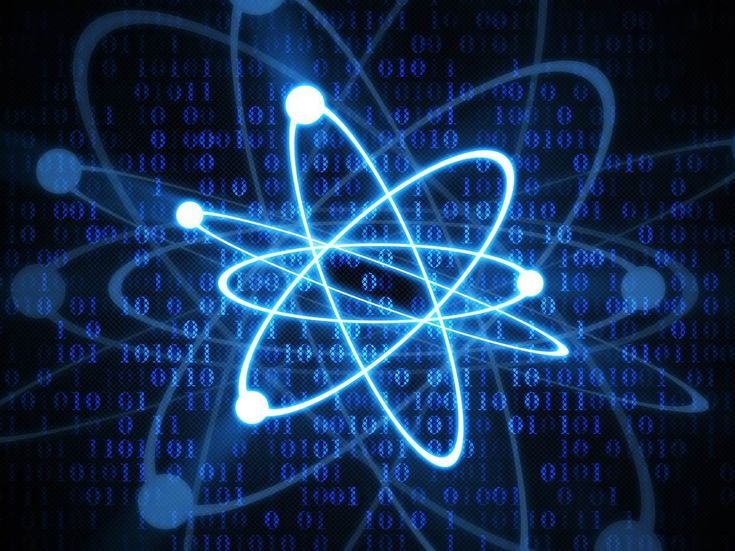
The space industry has always been at the forefront of technological innovation, and space robotics represents one of the most exciting frontiers in this field. These robotic systems are crucial for a variety of space missions, from exploration and satellite servicing to habitat construction and in-space manufacturing.
In the United States, numerous companies are leading the charge in developing advanced robotic technologies for space applications.
This article highlights the top 10 space robotics companies in the USA, detailing their contributions, technologies, and future prospects.
- NASA Jet Propulsion Laboratory (JPL)
The NASA Jet Propulsion Laboratory (JPL) is a leader in space robotics and has been responsible for some of the most iconic robotic missions in space exploration history. As a federally funded research and development center, JPL operates under NASA’s direction and is managed by the California Institute of Technology.
Key Contributions:
Mars Rovers: JPL has designed and managed multiple Mars rovers, including Sojourner, Spirit, Opportunity, Curiosity, and the most recent, Perseverance. These rovers have provided unprecedented insights into the Martian surface and atmosphere.
Robotic Arms: JPL has developed robotic arms used on the Mars rovers and other spacecraft, enabling them to conduct scientific experiments, collect samples, and perform intricate tasks.
Future Prospects:
JPL continues to innovate in space robotics, with future missions including the Mars Sample Return mission, which aims to bring Martian samples back to Earth for analysis.
READ MORE: Samsung Galaxy S25 Series: What We Know So Far
- SpaceX
Overview:
Founded by Elon Musk, SpaceX has revolutionized the space industry with its focus on reusable rockets and ambitious missions to Mars. While SpaceX is best known for its launch vehicles, the company is also making significant strides in space robotics.
Key Contributions:
Dragon Capsule: The Dragon spacecraft, used for cargo and crew missions to the International Space Station (ISS), incorporates robotic systems for docking and cargo manipulation.
Starship: SpaceX’s next-generation spacecraft, Starship, will include advanced robotic arms and automated systems for a variety of tasks, including satellite deployment and planetary exploration.
Future Prospects:
SpaceX’s development of Starship, which is designed for missions to the Moon and Mars, will further integrate advanced robotics to support human and automated missions in deep space.
- Boston Dynamics
Overview:
Boston Dynamics, a subsidiary of Hyundai Motor Group, is renowned for its cutting-edge robotic technology. Although initially focused on terrestrial applications, the company is exploring space robotics as an extension of its capabilities.
READ MORE: OpenAI Launches New Reasoning Model: OpenAI o1
Key Contributions:
Quadruped Robots: Boston Dynamics’ Spot robot, a versatile quadruped, has potential applications in space exploration for traversing rugged terrain and performing inspection tasks.
Robotic Manipulation: The company’s advanced robotic arms and manipulation systems can be adapted for use in space environments, aiding in construction, maintenance, and scientific missions.
Future Prospects:
Boston Dynamics is collaborating with space agencies and companies to adapt its robotic technologies for space applications, potentially contributing to future lunar and Martian missions.
- Astrobotic Technology
Overview:
Astrobotic Technology is a Pittsburgh-based company specializing in lunar logistics and robotic missions. The company aims to make the Moon accessible to the world by providing cost-effective lunar transportation services.
READ MORE: Exciting October for Smartphone Fans: Seal the Month
Key Contributions:
Lunar Landers: Astrobotic is developing the Peregrine and Griffin lunar landers, which will deliver payloads to the Moon’s surface. These landers incorporate advanced robotics for payload deployment and surface operations.
Lunar Rovers: The company is also developing lunar rovers capable of conducting scientific research and exploration on the Moon.
Future Prospects:
Astrobotic has secured multiple contracts with NASA under the Artemis program and is poised to play a crucial role in returning humans to the Moon and establishing a sustainable lunar presence.
- Made In Space
Overview:
Made In Space, now part of Redwire, specializes in in-space manufacturing technology. The company’s innovative solutions aim to enable the production of materials and components directly in space, reducing the need for Earth-based resources.
Key Contributions:
3D Printing in Space: Made In Space developed the first 3D printer to operate in space, installed on the ISS. This technology allows astronauts to manufacture tools and parts on demand.
Archinaut: The Archinaut platform combines 3D printing and robotic assembly to build large structures in space, such as satellites and space habitats.
Future Prospects:
Made In Space is advancing its in-space manufacturing capabilities, with future projects including the construction of large space telescopes and infrastructure for deep space missions.
READ MORE: TikTok and Data Privacy: Should Users Be Concerned?
- Northrop Grumman
Overview:
Northrop Grumman is a major aerospace and defense contractor with significant contributions to space robotics. The company’s expertise spans satellite servicing, space exploration, and autonomous systems.
Key Contributions:
Mission Extension Vehicle (MEV): Northrop Grumman’s MEV is the world’s first commercial satellite servicing vehicle, capable of extending the operational life of satellites by docking and performing maintenance.
Robotic Arms and Systems: The company has developed various robotic arms and systems for use in space missions, including those on the ISS and upcoming lunar missions.
Future Prospects:
Northrop Grumman continues to innovate in satellite servicing and autonomous space systems, with plans to support NASA’s Artemis program and other deep space exploration missions.
- Intuitive Machines
Overview:
Intuitive Machines is a Houston-based company focused on providing lunar transportation and data services. The company leverages its expertise in robotics to develop innovative solutions for lunar exploration.
READ MORE: The Role of Social Media in Political Polarization
Key Contributions:
Nova-C Lander: The Nova-C lunar lander is designed to deliver payloads to the Moon’s surface. It features robotic systems for precision landing and payload deployment.
Lunar Rovers and Systems: Intuitive Machines is developing robotic systems to support lunar surface operations, including exploration and scientific research.
Future Prospects:
Intuitive Machines has secured contracts with NASA for lunar missions and aims to become a key player in the commercial lunar economy, supporting scientific and commercial activities on the Moon.
- Motiv Space Systems
Overview:
Motiv Space Systems specializes in developing robotic and motion control systems for space applications. The company’s innovative solutions are designed to enhance the capabilities of spacecraft and space missions.
Key Contributions:
Robotic Arms: Motiv’s robotic arms are used in various space missions, providing precise manipulation capabilities for tasks such as sample collection and instrument deployment.
Mars 2020 Mission: Motiv contributed to the Mars 2020 mission by developing the robotic arm for the Perseverance rover, enabling it to perform complex scientific tasks on the Martian surface.
Future Prospects:
Motiv Space Systems is involved in upcoming lunar and Mars missions, continuing to develop advanced robotic solutions to support exploration and scientific discovery.
- Sierra Nevada Corporation (SNC)
Overview:
Sierra Nevada Corporation (SNC) is a global aerospace and defense contractor with a strong presence in space robotics. The company is known for its innovative solutions in space transportation, satellite systems, and robotics.
Key Contributions:
Dream Chaser Spaceplane: SNC’s Dream Chaser is a reusable spacecraft designed for cargo and crew missions to low Earth orbit (LEO). The spaceplane incorporates robotic systems for docking and payload handling.
Robotic Servicing: SNC is developing robotic systems for satellite servicing and in-space assembly, enhancing the longevity and capabilities of space assets.
Future Prospects:
SNC is expanding its space robotics capabilities, with plans to support commercial space stations, lunar missions, and deep space exploration initiatives.
READ MORE: Why Google Is on Trial for Monopolistic Practices
- Maxar Technologies
Overview:
Maxar Technologies is a leading provider of space solutions, including satellite manufacturing, Earth observation, and space robotics. The company’s advanced technologies support a wide range of space missions and applications.
Key Contributions:
Robotic Servicing and Assembly: Maxar is a pioneer in robotic servicing and assembly, with its technologies enabling satellite maintenance and construction of large space structures.
NASA’s Restore-L Mission: Maxar is developing the robotic arm for NASA’s Restore-L mission, which aims to refuel and service satellites in orbit, extending their operational life.
Future Prospects:
Maxar Technologies is at the forefront of space robotics innovation, with ongoing projects that include supporting lunar exploration, Mars missions, and the construction of space habitats.
The field of space robotics is rapidly advancing, driven by the innovative efforts of leading companies in the United States. These top 10 space robotics companies—NASA JPL, SpaceX, Boston Dynamics, Astrobotic Technology, Made In Space, Northrop Grumman, Intuitive Machines, Motiv Space Systems, Sierra Nevada Corporation, and Maxar Technologies—are shaping the future of space exploration and utilization. Their contributions are paving the way for more ambitious missions, from lunar bases and Mars exploration to in-space manufacturing and satellite servicing.
As technology continues to evolve, the capabilities of space robotics will expand, enabling humanity to explore deeper into the cosmos and establish a sustainable presence beyond Earth. These companies, with their cutting-edge technologies and visionary approaches, are leading the charge in this exciting frontier.
ALSO READ: Artificial Intelligence: Revolutionizing The Global Banking Sector









